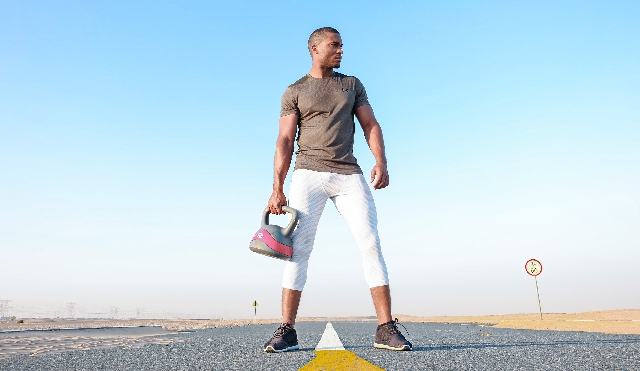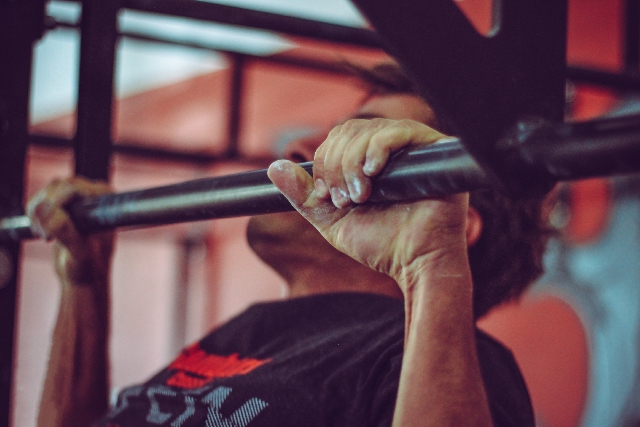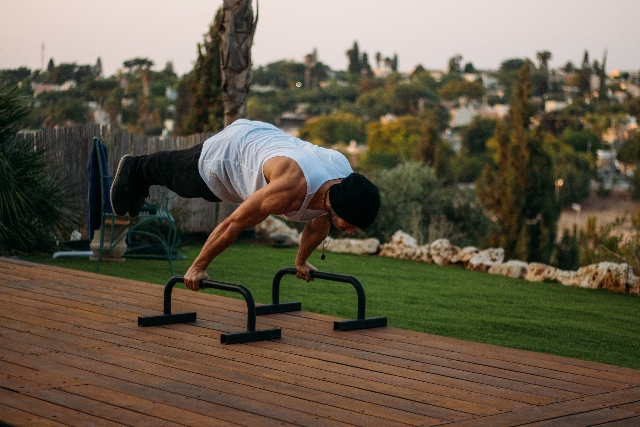Last Updated on January 8, 2024 by Chase Reiner
Pull-ups primarily work the latissimus dorsi and biceps brachii muscles. To perform a proper pull-up, hang from a bar with palms facing away, hands wider than shoulders. Pull body up until chin clears the bar, then lower down. Aim for 3 sets of 8-12 reps for optimal strength gains.
Jump To A Section
The Key Takeaways
- When performing a pull-up, you engage the core muscles of your body.
- The primary muscles worked by pull-ups are the latissimus dorsi (lats), trapezius (traps), and deltoids (shoulders).
- Pull-ups help to improve your posture and prevent injuries by correcting muscle imbalances.
- Other muscles, such as the quadriceps and calf muscles, provide stability by holding onto something for support while doing a pull-up.
Overview of What muscles do pull-ups work
| Muscle Group | Role in Performing Pull-Ups |
|---|---|
| Latissimus Dorsi (Lats) | The primary muscle involved in pull-ups. It’s responsible for extending, adducting, and rotating the arm. |
| Brachialis | It aids the biceps in elbow flexion. Especially active during chin-up variations of pull-ups. |
| Rhomboids | They retract the scapulae, pulling them towards each other, assisting in the overall pulling movement. |
| Trapezius | Comes into play at the top of the movement as you retract your scapulae. It adds control to the movement. |
| Biceps Brachii | Plays a significant role in the upward movement as they flex the elbow joint. |
| Brachioradialis | Located in the forearm, it assists in elbow flexion like the biceps and brachialis. Most active during neutral and reverse-grip pull-ups. |
| Infraspinatus and Teres Major | They’re part of the rotator cuff and assist with shoulder extension and adduction. |
| Pectoralis Major and Minor (Pecs) | They’re minor muscles that assist during the movement. |
| Deltoids (Shoulders) | The posterior part contributes during the upward phase of the pull-up by extending the shoulder. |
| Serratus Anterior | Helps stabilize the scapula during the pulling movement. |
Full Overview of What Muscles Pull-Ups Work Out
Pull-ups are excellent for working out your upper body, but knowing which muscles they target and how to perform them properly is essential. The muscles worked during a pull-up are the latissimus dorsi (lats), biceps, trapezius, and erector spinae.
To perform a pull-up, start hanging from a bar with your palms facing away. Engage your core the best way possible, and pull yourself up until your chin is over the bar. Lower yourself back down slowly and repeat.

When most people think of pull-ups, they imagine pulling their body up over a bar until their chin passes the top. While this technique is one way to perform the exercise, it isn’t the only way. There are many variations of the pull-up that can work different muscles in your back and arms regarding what you want to do with them.
This guide will take you through what muscles are involved in pull-ups and which exercises will most effectively target them.
Pull-Up Variations and Alternatives
When it comes to building upper body strength, pull-ups are a go-to exercise. However, if you’re looking to spice up your routine or are working out at home without access to a pull-up bar, there are plenty of variations and alternatives that can target the same muscles. We’ve compiled a list of five notable pull-up variations and alternatives to help you diversify your workout and maximize your gains.
- Jumping Pull-Ups
If you’re a beginner or struggling with performing a full pull-up, jumping pull-ups are an excellent place to start. This variation allows you to engage the latissimus dorsi (lats), rhomboids, and biceps while reducing some of the bodyweight resistance. Stand under a bar, jump up, and quickly grab onto the bar with an underhand grip. Use your momentum to assist you in pulling your body up toward the bar. Lower yourself back down slowly and repeat for a set of reps.
- Negative Pull-Ups
Negative pull-ups are another effective way to build strength and progress towards performing full pull-ups. Start by standing on an elevated surface and grasping the bar with an overhand grip. Jump up, pulling your chest towards the bar, and then slowly lower yourself down as slowly as possible. Focus on controlling your descent rather than pulling yourself up. This helps build muscle strength eccentrically, preparing your body for full pull-ups.
- Australian Pull-Ups
Australian pull-ups, also known as inverted rows, are an excellent alternative when a pull-up bar is not available. This exercise targets the same muscles as regular pull-ups but requires a horizontal surface such as parallel bars or a sturdy Smith machine. Lie underneath the bar with feet on the ground and grasp it with an overhand grip, arms extended straight out. Pull yourself up while maintaining a straight body line, squeezing your shoulder blades together. Lower yourself back down and repeat.
- Assisted Pull-Ups
If you have access to an assisted pull-up machine or resistance bands, assisted pull-ups are a fantastic way to gradually increase your strength. Adjust the assistance level on the machine or loop the resistance band around the bar and then place your foot or knee through it to provide assistance. Follow the same form as with regular pull-ups, focusing on engaging the muscles as much as possible while the assistance aids in completing the exercise.
- Barbell Rows
While not a direct pull-up variation, barbell rows are a compound exercise that effectively targets the same muscles. This exercise primarily focuses on the lats and upper back muscles while also engaging the biceps and core. Stand in front of a barbell, bend your knees slightly, hinge forward at the hips, and grasp the bar with an overhand grip, hands slightly wider than shoulder-width apart. Pull the bar towards your abdomen, squeezing your shoulder blades together, then lower it slowly.
The Anatomy of the Upper Body
The pull-up is a compound, multi-joint exercise that works various muscles. The main muscles worked are the latissimus dorsi (lats), trapezius (traps), and deltoids (shoulders). The biceps, brachialis, and brachioradialis (forearms) also get a good workout. The erector spine (lower back) and abs work isometrically to stabilize the body.
Other muscles, such as the quadriceps and calf muscles, provide stability by holding onto something for support (knees on chairs or rings, respectively).
Benefits of Pull-Ups
Though they might seem like a simple exercise, pull-ups offer a range of benefits for those who perform them regularly. For one, pull-ups work out various muscles in your arms, shoulders, and back, making them a great way to build strength. Pull-ups also help to improve your posture and prevent injuries by correcting muscle imbalances. Lastly, they’re a great way to boost your self-confidence. So how do you properly perform a pull-up? Read on to find out.

Types of Pull-Up Bars
There are several types of pull-up bars that you can use to get a great workout. The most common type is the overhand grip bar, which works your back, shoulders, and biceps. Another popular type is the underhand grip bar, which targets your back and biceps. There are also suspension bars, which work your entire upper body, and TRX bars, which work your core muscles.
The initial stage is gripping the bar with your palms facing away from you to perform a proper pull-up. If you’re using an overhand grip, your hands should be shoulder-width apart. If you’re using an underhand grip, your hands should be about six inches apart.
Steps to Doing Your First Pull Up
- Find a sturdy bar that you can grip comfortably with your palms facing away from you.
- Hang from the bar while your arms are fully extended, and your feet are off the ground.
- Ensure you bend your knees slightly and cross your ankles behind you.
- Use your back, shoulders, and arms to pull yourself up until your chin is over the bar.
- With super control, lower yourself slowly back to the starting position.
- Repeat for as many reps as you can.
- Rest for 30-60 seconds between sets if needed
Stretching Before a Workout
It’s essential to warm up your muscles before a workout; stretching is one way to do that. When stretching, you increase your range of motion and prevent injuries. Static stretches are best for warming up.
To perform a static stretch;
- Reach up to the sky and hold the position for 30 seconds.
- Once in place, pull down on your body as if trying to touch your toes.
- Maintain the position for around 10 seconds, then release the stretch and relax into it.
- Repeat two more times.
If you have lower back pain or any other injury that makes it difficult to touch your toes, just try getting as close as possible with control and holding it there for at least 10 seconds each time.
Fundamental Mechanics of the Movement When Doing Pull-Ups
The main movement of the exercise is the vertical pulling of your body up to the bar. To do this properly;
- It would help if you first took a grip on the shoulder-width apart bar.
- Once you have a firm grip, begin hanging from the bar with your arms fully extended.
- Use your back and arm muscles to lift your body until your chin is above the bar.
- Lower yourself carefully back to the starting position and repeat.
Common Mistakes While Performing Pull-ups
The common mistake people make while performing pull-ups is using too much weight. This puts unnecessary strain on your muscles and leads to injury. Additionally, people often swing their bodies while performing pull-ups, which takes away from the work your muscles are doing. Finally, not keeping your form in check will also decrease the effectiveness of the exercise.
Tip: Remember to keep your core engaged throughout the movement to protect your lower back.
Tips to Avoid Injuries While Doing Pull-Ups
Although pull-ups are an excellent exercise for working out your upper body, they can also be dangerous if not done correctly. Here is what you should do to avoid injuries while doing pull-ups:
- Warm up before you start: A simple warm-up of jumping jacks or running in place for a minute or two will help prepare your muscles for the exercise.
- Use a spotter: If you’re new to pull-ups, it’s always a good idea to have someone else there to help you. They can spot you and ensure you don’t fall and hurt yourself.
- Start slow: Don’t try to do too many reps right away. Start with one or two and work your way up as you get stronger.

Conclusion
Knowing what muscles pull-ups work and performing a pull-up correctly works many muscles in your back, shoulders, and arms. To properly execute a pull-up, start by gripping the bar with your palms facing away from you, shoulder-width apart. Hang from the bar while your arms are fully extended. Use your back and arm muscles to pull yourself up until your chin is over the bar, and lower yourself carefully back down to the starting position. Doing pull-ups regularly can help improve your upper body strength and definition.
Frequently Asked Questions
Do Pull-Ups Have Any Medical Implications?
While pull-ups work out various muscles, they also have some medical implications that you should be aware of before starting your workout routine. For example, if you have shoulder pain, doing pull-ups may aggravate the condition. People with lower back pain may also find that pull-ups exacerbate their symptoms. As always, consult a doctor or physical therapist before starting any new exercise routine.
Reference 1: https://www.rubberbanditz.com/blog/muscles-worked-in-pull-ups-and-chin-ups/
Reference 2: https://www.blackridgefitness.com/pull-ups-muscles-worked/

Hi, this is Chase Reiner from Idaho, USA. I am very passionate about fashion, My blog is all about exploring the latest fashion trends for men. I am a fashion lover and I love finding out what the hottest trends are and sharing all these in this MenNStuff.Com

